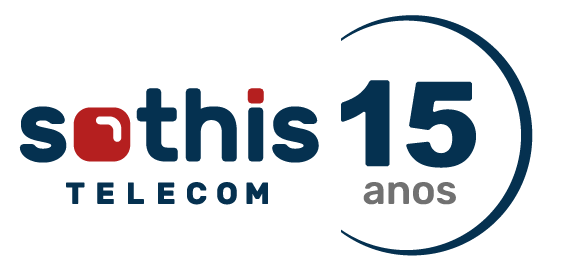What is a Cloud PBX and how does it work?
PABX or IP PABX is a telephone system designed to be a private exchange, responsible for connecting calls received from the public network (phone lines) to internal users (extensions) of the service. It also allows all users to access telephone lines to make calls to other external telephones. This system offers numerous advantages for managing and monitoring calls and agents who make/receive phone calls. And of course, everything is configured in the cloud, without the need for new equipment and wiring.
Why have a Cloud PBX?
A PBX system is critical for a business that makes and receives many phone calls. The system facilitates communication between internal and external users of a company, not only for the user but also for monitoring the manager. There are also basic configurations of a PABX, such as a waiting queue with personalized messages, which improve the quality of answering calls. Due to the ease of configuration and remote management, savings can also be generated.
What are the advantages of having a Cloud PBX system?
When deploying a Cloud PBX system, the company can count on numerous technical resources that facilitate the management of service and calls made, some of them below:
- URA (audible response unit);
- ACD (automatic call distribution);
- Call transfer;
- Conference calls;
- Creation of service groups by sector;
- Customized waiting message;
- Call in wait;
- Call recording;
- Charging of calls by cost center;
- Time service configuration.
Functions may vary according to the contracted package, these are general characteristics that may or may not be covered. Remember that each service, company and system have different levels of delivery.
Therefore, it is important to have the advice of a professional to meet your company's needs. Our sales team has technical skills that can contribute to offering the best service since Sothis solutions are customizable.
What types of PBXs exist?
There are some PABX modalities and let's mention some of them:
Cloud PBX or Virtual PBX is a fully web PBX system that does not require a local server connected to the company network. Any user (computer extension, cell phone extension or IP phone) can access the system from any location with internet access. In this case, system users can access the company's network service via cable or Wi-Fi, the 4G mobile network or even at home using broadband.
Local IP PBX – is a system already based on VoIP (voice over IP) technology, consisting of a local server: the company's local data network.
In this case, the company's extensions can be in the following options: Softphone installed on computers; phone with IP technology; applications installed on smartphones.
In the three options above, the devices must be connected to the local network where the IP PBX is installed in order to authenticate with the IP PBX server that gives access to the service.
The means of connection with telephone operators are: analog lines; digital lines; E1 (up to 30 channels) and SIP Trunk (VoIP technology).
The oldest PBX (physical appliance) is the one where the hardware is installed within the company's network environment. It is practically a computer with extension cards and trunk cards, being respectively the connection means for the internal communication of the extensions and the connection with the telephone lines of the operators for external calls.
In this modality, voice is a separate layer of the company's computer network, and the PABX is an application that runs on a specific voice network.
In this model, the terminals that are considered extensions can be used by analog or digital telephones. Analog telephones generally do not have features such as speakerphone, digital display to know the BINA of the call and no conference call.
In addition to the advantage of not relying on a local physical structure, what else does the Cloud PBX offer?
- Low cost;
- Constant software update;
- Redundancy;
- Mobility;
- Does not take up physical space;
- No hardware required Simple remote site interconnection;
- Virtual number;
- Scalability.
Want more details, see see this post on our blog.
What is the best PABX model? Local, IP PBX or in the Cloud?
Even before the COVID-19 pandemic, there could be some kind of doubt about the best option, due to the particularity of each solution. However, with the need to have something more fluid, for the home office or even the hybrid model, the solution that best suits is the PBX in the Cloud. The freedom to have a technology that can quickly facilitate the implementation, whether for adding or subtracting extensions, for any model (face-to-face, hybrid or remote) is a competitive advantage for your company.
Why is an IP PBX solution only viable from 8 extensions?
It is important to take into account that the above solutions require investment in hardware, adequate physical space, and a qualified technician to implement and maintain the system. In this way, small solutions end up not being justified.
What are the steps to acquire a local IP PBX?
he basic roadmap for acquiring a local IP PBX should go through the following questions:
- How many extensions will I hire?
- How many phone lines will I hire?
- Do I have a data network with enough network points for the extensions?
- Which IP phones will I use?
- Will I use extensions on the computer? How many?
- Will I use extensions on my smartphone? How many?
- What facilities do I need to integrate/implement?
- In what period do I need the installed solution?
- Do I have an Internet link with the necessary bandwidth for the number of extensions I will use?
What are the steps to hire a Cloud PBX?
The fundamental questions before hiring a Cloud PBX are:
- Will I sign with a provider that will provide the PBX and telephony together?
- How many extensions do I need?
- Will I be using IP phones?
- Extension connected to computer?
- Extension connected to smartphone?
- What facilities do I need to implement?
- In what maximum period do I need everything installed?
Did the 2020 pandemic affect the PABX phone market?
PABX is a widely used technology that is already well established in the market. Many companies were still not studying new ways to replace their PABX (physical) and on-premises IP solutions until the arrival of the COVID pandemic.
Remote work brought some needs, and so the demand for a more flexible virtual PBX grew, showing the potential of this solution capable of providing mobility and keeping companies' telephones functional, even without the need for the professional to be in loco.
The PBX in the Cloud also turned out to be a great option for small and medium-sized companies, since its adoption does not involve the purchase of a server and physical space, nor the hiring of a technician for local maintenance, only through subscriptions is it possible to change the amount of company extensions.
Were there any doubts about the functioning of the PBX in the Cloud?
Fale conosco e de nossos consultores ajudará com a informação que precisa, basta clicar aqui.
What is a Dark Fiber?
Dark Fiber is an optical fiber infrastructure (cables and connectors) that is installed in the premises but is not being used. The term “dark” means that the fiber is not illuminated, that is, no optical signals are emitted. Dark optical fiber can also be referred to as Passive Fiber. The term dark fiber can also be used to designate fiber that carries light radiation of a non-visible frequency.
What is the advantage of a dedicated link?
The dedicated link generates several fixed IPs that guarantee even more security in the transmission of your company's data and connections. Unlike ADSL technology, which provide a single IP, fixed IPs on the dedicated link enable the installation of dedicated external servers.
Which companies need dedicated link?
Dedicated link is recommended for companies that have very heavy network traffic. Usually, they need efficiency and agility when transmitting them, so that there are no bottlenecks that hinder the productivity of employees and collaborators.
Quer uma cotação especial para você? Fale com um de nossos consultores clicando aqui.
What is Fiber Optic?
Optical fiber is a very thin, transparent glass strand, which has a diameter of approximately 0.5mm, similar to a strand of hair. It has a cylindrical structure and is divided into two parts: core and shell, where the core is the central region and the shell is the region surrounding the core. The refractive index of glass is such that a ray that penetrates from one end walks through the fiber core, suffering total reflections in its walls, until reaching the other end.
Want more details, see see this post on on our blog!
I paid the same invoice twice, how to proceed?
Don't worry, just inform our finance department through financeiro@sothis.com.br that the amount paid in duplicate will be deducted from your next billing, or, depending on the case, the refund will be made.
How can I stop receiving promotional communications from Sothis Telecom?
At the end of each email you will find a button to unsubscribe from our database, or you can send an email to privacidade@sothis.com.br requesting the removal of your contact within a period of up to 3 working days.





